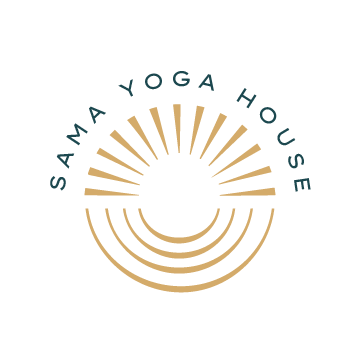Understanding Yoga Teacher Training Costs
Embarking on the path of becoming a yoga teacher is a deeply transformative journey. It’s more than just learning to guide a class—it’s an exploration of self, a commitment to growth, and an opportunity to share the gift of yoga with others.
But what does it take financially to step into this role?
Understanding the cost of yoga teacher training is an essential part of preparing for this next chapter. From tuition and materials to travel and accommodations, many factors influence the investment required.
In this guide, we’ll break down what to expect, explore the elements that shape training costs, and share ways to make this journey more accessible.
By the end, you’ll have a clear sense of what it takes—not just in dollars, but in dedication—to bring your teaching dreams to life. Let’s dive in.
The Cost Spectrum of Yoga Teacher Training
Yoga teacher training costs can vary widely. Prices can range from a few hundred dollars to several thousand.
Factors such as program length, location, and teaching style play a significant role in this variation.
Some programs are intensive retreats, while others unfold over several months. Each style impacts the cost differently.
Online programs often offer more budget-friendly options. They eliminate travel and accommodation expenses.
Here's a general overview of potential costs:
- Short Certification Courses: $300 - $900
- 200-Hour Programs: $2,000 - $4,000
- 300 and 500-Hour Programs: $4,500 - $7,000+
Understanding these ranges helps set realistic budget expectations.
Factors Influencing Yoga Teacher Training Prices
Several elements affect yoga teacher training prices. Knowing these can help you find a program that suits your financial situation.
Location is a major factor. Programs in urban centers often cost more due to higher living expenses.
Duration and program intensity can also shift costs. Intensive formats might charge a premium for their condensed training.
A school’s reputation plays a role too. Renowned institutions often charge higher fees. Their extensive experience and credibility justify the investment.
- Location: City versus rural settings
- Program Length: Intensive vs. extended courses
- School Prestige: Known institutions cost more
Other aspects, like class size and available facilities, also influence pricing.
Location and Venue
Where you choose to study affects the cost of training. Urban centers tend to have higher training prices.
High demand for yoga and living expenses in cities drive these costs up.
Conversely, rural and serene settings often offer more affordable options. They provide a peaceful environment for practice at a lower cost.
Duration and Intensity of the Program
Training length impacts cost significantly. A 200-hour program spans several weeks, while advanced courses take longer.
Intensive programs pack training into a short time frame. These often demand higher fees due to their rigorous structure.
Longer courses, spread over months, may be more affordable. They allow for a gradual learning pace.
Accreditation and Reputation of the School
The reputation of your chosen school matters. Renowned schools with extensive track records often charge more.
Accreditation also adds to the cost but ensures quality and standards.
Choosing a respected institution can be a valuable investment. It offers assurance and potentially enhances your marketability as a teacher.
In-Person vs. Online Training Costs
The format of your training affects the cost. In-person programs often include extra expenses like travel and accommodation.
Online training can reduce these costs. It provides flexibility and often features lower tuition fees.
Despite potential savings, ensure the online program is accredited. Quality of training should not be compromised for cost.
Here’s a cost comparison:
- In-Person Training: $1,500 - $5,000
- Online Programs: $500 - $2,000
Online training rises in popularity for its flexibility and affordability. Ensure it aligns with your learning style.
Online yoga teacher training has gained popularity recently. It offers flexibility and convenience for many learners.
Participants can learn at their own pace while managing other commitments.
This format provides an affordable pathway into yoga teaching. However, ensure it maintains high teaching standards.
Additional Costs to Consider
Beyond tuition, additional expenses arise. Planning for these helps manage total costs effectively.
Consider materials and supplies necessary for training. Some programs bundle these costs; others list them separately.
Travel and accommodations can add up too. Sometimes these are needed for on-site training intensives.
Additional costs may include:
- Materials: Books, manuals
- Travel and Stay: Commuting, lodging for retreats
- Certification Fees: Test and registration fees
Budgeting for these ensures a smooth training experience.
Materials, Travel, and Accommodations
Course materials often mean extra costs. Books and manuals can add up, especially for specialized topics.
Travel and lodging are necessary for in-person programs. Retreat-style training requires more planning.
Explore options like student hostels or shared accommodation to cut costs.
Certification and Continuing Education
Certification incurs extra fees. This validates your training, often necessary for teaching.
Continuing education is vital for staying updated. It involves ongoing costs but enhances your skills and credibility.
Plan for these post-certification expenses to maintain your teaching credentials.
Breaking Down the Average Costs
When exploring yoga teacher training, understanding average costs is essential. Prices vary due to several factors, including program type and location.
A basic 200-hour yoga teacher training program can cost between $1,000 to $3,500. More comprehensive options, like 300 and 500-hour programs, may range from $2,000 to $7,000.
Additional elements such as materials and certification fees contribute to overall expenses. Therefore, it's vital to budget wisely for a holistic estimate.
Here's a simple breakdown of average training costs:
- 200-Hour Programs: $1,000 - $3,500
- 300-Hour Programs: $2,500 - $5,000
- 500-Hour Programs: $4,000 - $7,000
Choosing the right program requires examining these financial commitments and aligning them with your goals.
How Much Does a 200-Hour Yoga Teacher Training Cost?
The cost of a 200-hour yoga teacher training program varies significantly. It often depends on location, program structure, and course content depth.
In metropolitan areas, these programs typically start around $2,000. Resort-based or exotic locations can escalate costs to $5,500 or more.
Choosing an online format might reduce the expense, starting as low as $1,000. However, ensure it provides comprehensive instruction and credible certification.
Ultimately, the best choice will align with your learning style and budget, maximizing both value and affordability.
Advanced Training: 300 and 500-Hour Programs
Advanced training programs offer deeper insight and instruction. They come with higher costs, reflecting expanded content and duration.
A 300-hour program generally ranges from $2,500 to $5,000. In top schools or desirable locations, prices might exceed this range.
The 500-hour programs can cost anywhere from $4,000 to $7,000, offering the most extensive education.
The investment is considerable, but it enhances expertise and career prospects. Deciding to pursue advanced training should factor in both long-term benefits and current financial capacities.
Finding Affordable Yoga Teacher Training
Affordability is crucial when selecting a yoga teacher training program. Many aspirants seek options that fit their budget without compromising quality.
An effective way to manage costs is researching available financial aids and discounts. Many programs offer benefits that significantly reduce expenses.
Consider the following cost-saving options:
- Scholarships
- Work-Trade Programs
- Financial Aid
- Early-Bird Discounts
- Payment Plans
Exploring these possibilities is vital for an affordable yoga education journey. Always inquire about available financial options when contacting training providers.
Scholarships and Financial Aid
Scholarships play an important role in offsetting yoga training costs. Many schools provide financial assistance to deserving students.
Applying for scholarships requires preparation. It often involves submitting an application, essays, or demonstrating financial need.
Researching available scholarships early increases your chances of receiving aid. It’s a smart strategy to alleviate financial pressures during your training journey.
Early-Bird Discounts and Payment Plans
Early-bird discounts provide excellent opportunities to save money. Enrolling ahead of time can lead to reduced tuition fees.
Many programs also offer flexible payment plans. This eases the financial burden by spreading payments over time.
Always check for these benefits when enrolling. The savings can be substantial, making your investment more manageable.
The Cheapest Way to Get Yoga Certification
Pursuing an affordable yoga certification requires strategic choices. Online programs often offer cost-effective solutions without location-based expenses.
Consider attending local workshops or part-time courses. These options reduce travel costs while providing quality instruction.
Additionally, researching schools with solid reputations yet competitive pricing is essential. Balancing affordability with quality yields the best value in your yoga education.
Making the Investment Worthwhile
Investing in yoga teacher training is not just a financial decision, it’s a personal commitment. The gains extend beyond monetary returns.
Quality training opens doors to diverse career opportunities. It enhances your skills, making you a competent and confident instructor.
Moreover, the experience fosters personal growth. You'll deepen your practice, understanding, and connection to yoga's philosophical roots.
Selecting the right program is crucial. Consider both short-term costs and long-term benefits to ensure your investment pays off.
Return on Investment: Career Opportunities and Personal Growth
A well-chosen yoga teacher training program lays the foundation for a rewarding career. Teaching yoga offers flexible work schedules and global job opportunities.
Beyond professional gains, training deeply impacts personal development. It nurtures self-awareness, discipline, and empathy.
These qualities are invaluable, enriching both personal life and teaching capabilities. Thus, the return is not merely financial but also profoundly transformative.
Long-Term Benefits of Quality Training
Investing in reputable training ensures lasting benefits. You'll receive comprehensive instruction and guidance from experienced mentors.
High-quality programs foster lifelong learning. They equip you with skills to expand into specialized areas of yoga, enhancing your marketability.
Furthermore, such training bolsters credibility. Graduates often find it easier to build trust with students and secure teaching positions. Quality training is a worthwhile long-term investment.
Conclusion
Understanding yoga teacher training costs involves weighing various factors. Consider program reputation, location, and additional expenses.
Balancing your budget with your goals is key. Quality training may require a higher initial investment but often yields greater rewards.
Thorough research and clear priorities help ensure your financial and personal commitments align with your aspirations.
Assessing Your Goals and Budget
Before enrolling, reflect on your career goals. Determine what you wish to achieve through teacher training.
Evaluate your financial capacity. Determine what type of program fits within your budgetary constraints without undue strain.
Aligning your ambitions with your budget ensures your choice supports both your wallet and your future career.
Making an Informed Decision
Research potential training programs in detail. Look for accredited schools and read reviews from past participants.
Seek recommendations from trusted teachers or peers in the yoga community. Their insights can guide your selection.
A well-informed choice boosts confidence that your investment will be fruitful, fulfilling both personal and professional aims.
Armed with knowledge, you're ready to embark on this transformative journey and enhance both your personal practice and teaching skills.


